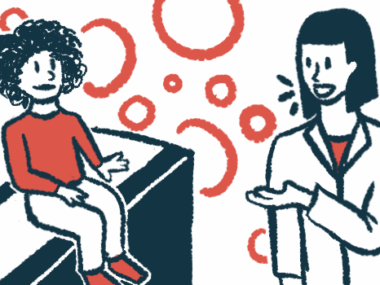Livmarli sustains benefit for Alagille patients over 7 years: Trial data
Itching, growth, markers of liver damage all improved
Written by |

Nearly all children with Alagille syndrome who received Mirum Pharmaceuticals’ Livmarli (maralixibat) for seven years as part of clinical studies continued to experience benefits, including less itching, lower levels of liver damage markers, and better growth.
That’s according to data from a Phase 2 trial, MERGE (NCT04168385), that is evaluating the therapy’s long-term safety and efficacy in patients who participated in previous Livmarli trials.
The findings were presented by Doug Mogul, MD, PhD, executive director of scientific affairs and engagement at Mirum, in a poster during the European Association for the Study of the Liver (EASL) annual congress, held June 5-8 in Milan, Mirum announced.
The poster was titled “Clinical Benefits with Maralixibat for Patients with Alagille Syndrome are Durable Through 7 Years of Treatment: Data from the MERGE Study.” An abstract of the poster (THU-094) appeared in the Journal of Hepatology.
Bile produced in the liver passes out through ducts, or thin tubes, to the small intestine, where it helps digest fat. People with Alagille syndrome have fewer bile ducts, and bile builds up in the liver, causing damage, and spills over into the bloodstream, resulting in cholestatic pruritus, or itching.
Protein blocker
Livmarli blocks the action of a protein called ileal bile acid transporter, or IBAT. This prevents bile from being taken back from the intestines into the liver, increasing the amount that is excreted in the stool. As a result, the pool of bile in the body is leveled off, easing liver damage and cholestatic pruritus.
Taken as an oral solution, Livmarli is approved to treat cholestatic pruritus associated with Alagille syndrome in the U.S, the European Union, and other markets. Approvals were mainly based on data from the Phase 2 ICONIC trial (NCT02160782), which showed the therapy was superior to a placebo at easing pruritus and reducing bile acids in the bloodstream.
Similar findings were reported in two other placebo-controlled trials — IMAGO (NCT01903460) and ITCH (NCT02057692) — and their subsequent open-label extension studies IMAGINE (NCT02047318) and IMAGINE-II (NCT02117713).
The ICONIC study tracked patients for up to four years, while IMAGO/IMAGINE and ITCH/IMAGINE II lasted about 1.5 years.
Patients completing ICONIC, IMAGO/IMAGINE, or ITCH/IMAGINE II were invited to enroll in the Phase 2 MERGE trial, where all would continue Livmarli treatment for a longer period.
Newly shared results pertained to the therapy’s safety and efficacy for up to seven years within these trials.
A total of 86 patients, 57% of them boys, with a median age of 5, joined the MERGE study. Seventy-six were followed for one year, 45 for three years, 34 for six years, and 23 for seven years.
Itching eased more each year
Before Livmarli, the children had moderate to severe itching, scoring a median 2.7 points on a scale from zero (no itching) to four (severe itching). With Livmarli treatment, itching showed a significant drop at every annual assessment, and after seven years, the scores were down by a median 2.1 points.
The proportion of children responding to treatment, defined as a one-point reduction or more in the itching rating scale, was 84.4% at three years, 90% at five years, and 74% at seven years.
Of the 17 respondents at year seven, all but one had a persistent response, with the remaining child showing an intermittent response.
The blood levels of bile acids, a bile component, also dropped significantly over time, and by a median of 121 micromoles per liter at year seven from an initial value of 194 micromoles per liter.
Blood levels of total bilirubin, a marker of liver damage, remained stable throughout the study. Those of direct bilirubin, the form that is released into bile, decreased, with the greatest drop observed after four years of treatment.
The levels of two liver enzymes used a markers of liver damage increased slightly over the years.
Children also experienced significant gains in height over the seven years, from a starting point where they were shorter than average to just above the average.
“Of those participants who remained on [Livmarli] out to 7 years, nearly all experienced benefit, including reductions in pruritus and [blood bile acid levels],” and “improvements in height,” the researchers wrote in the poster.
Moreover, “no new safety concerns were identified in the long-term,” the researchers wrote in the abstract.






